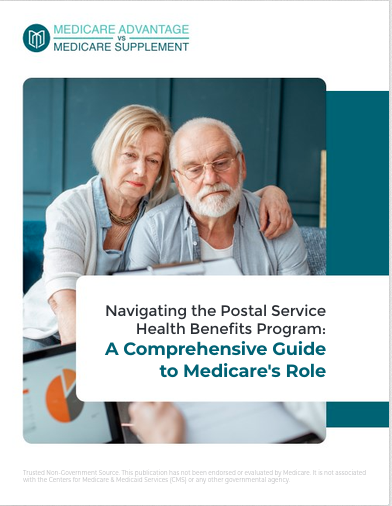Key Takeaways:
-
Medicare offers essential health coverage for those 65 and older, younger individuals with disabilities, and people with specific conditions.
-
Understanding its parts, costs, and timelines helps you make informed decisions for your health and budget.
What Is Medicare, and Who Is Eligible?
Medicare is a federal health insurance program that helps millions of Americans access healthcare services. You’re eligible if you’re 65 or older, under 65 with certain disabilities, or diagnosed with End-Stage Renal Disease (ESRD) or Amyotrophic Lateral Sclerosis (ALS). Whether you’re enrolling for the first time or reviewing your coverage, knowing the basics is crucial.
Breaking Down Medicare’s Parts
Medicare is divided into distinct parts, each covering specific services:
-
Part A (Hospital Insurance): Covers inpatient hospital stays, skilled nursing facility care, hospice, and some home health services. Most people don’t pay a premium for Part A if they’ve worked and paid Medicare taxes for at least 10 years.
-
Part B (Medical Insurance): Focuses on outpatient care, including doctor visits, preventive services, and medical equipment. Part B requires a monthly premium.
-
Part C (Medicare Advantage): These are all-in-one plans offered by private insurers. They bundle Part A, Part B, and often Part D. Medicare Advantage plans typically include additional benefits like vision, hearing, and dental.
-
Part D (Prescription Drug Coverage): Helps with the cost of prescription medications. Plans are provided by private companies and vary in coverage and cost.
When Should You Enroll?
Timing matters when it comes to Medicare enrollment. Missing deadlines can result in penalties or gaps in coverage.
Initial Enrollment Period (IEP)
Your IEP is a 7-month window that begins three months before the month you turn 65, includes your birthday month, and ends three months after. This is your first chance to enroll in Parts A, B, C, and D.
General Enrollment Period (GEP)
If you miss your IEP, you can sign up during the GEP, which runs from January 1 to March 31 each year. Coverage starts on July 1. Keep in mind that late enrollment in Parts A and B may result in higher premiums.
Special Enrollment Periods (SEPs)
Certain life events, like losing employer-sponsored coverage or moving to a new area, can qualify you for an SEP, allowing you to enroll outside regular periods.
Annual Enrollment Period (AEP)
Between October 15 and December 7 each year, you can make changes to your Medicare Advantage or Part D plans. Changes take effect on January 1 of the following year.
How Much Does Medicare Cost in 2025?
While Medicare provides substantial coverage, it’s not free. Here’s a quick breakdown of costs you’re likely to encounter:
-
Part A: Most people don’t pay a premium. However, if you’ve worked fewer than 10 years, premiums range from $284 to $518 per month. The inpatient hospital deductible is $1,676 per benefit period.
-
Part B: The standard monthly premium is $185, with an annual deductible of $257. If your income exceeds certain thresholds, you may pay an additional surcharge.
-
Part D: Prescription drug plans vary in premiums and deductibles, with a maximum deductible of $590. Out-of-pocket costs are capped at $2,000 for prescription drugs in 2025.
-
Part C: Medicare Advantage costs vary depending on the plan and provider. These plans often include added benefits but may have additional premiums, copays, or deductibles.
What Does Medicare Cover?
Covered Services
Medicare provides comprehensive coverage for many healthcare services, but understanding what’s included in each part helps avoid surprises.
-
Part A: Hospital care, skilled nursing facilities (after a qualifying hospital stay), hospice care, and limited home health services.
-
Part B: Preventive services like screenings and vaccines, outpatient care, mental health services, and durable medical equipment (like wheelchairs).
-
Part D: Prescription drugs, with coverage varying based on the plan’s formulary.
What Medicare Doesn’t Cover
Medicare doesn’t cover everything. Long-term care, most dental services, hearing aids, and routine vision care are excluded unless you have additional coverage like Medicare Advantage.
What Are Medicare Advantage and Supplemental Plans?
Medicare Advantage (Part C) plans often provide additional coverage for services not included in Original Medicare, like dental and hearing care. They’re managed by private insurers and come with varying rules, networks, and costs.
Medicare Supplement Insurance (Medigap) works alongside Original Medicare to cover costs like deductibles and copayments. You must have Parts A and B to buy a Medigap policy, and it doesn’t cover prescription drugs—that’s where Part D comes in.
Navigating Prescription Drug Coverage
Part D plans are essential if you regularly take medications. When choosing a plan, consider:
-
The Formulary: A list of covered drugs. Check that your medications are included.
-
Pharmacy Network: Some plans offer lower costs at preferred pharmacies.
-
Out-of-Pocket Costs: Look at premiums, deductibles, and copays.
If your medication needs change, you can adjust your plan during the AEP.
Medicare and Other Coverage
Medicare and Employer Coverage
If you’re still working at 65, you may delay Part B without penalty if you have employer-sponsored insurance. Confirm with your HR department to understand how Medicare coordinates with your coverage.
Medicare and Medicaid
If your income is limited, you might qualify for both Medicare and Medicaid. Medicaid can help pay for premiums, deductibles, and other costs Medicare doesn’t cover.
Avoiding Common Pitfalls
Medicare can feel overwhelming, but avoiding these mistakes helps you stay on track:
-
Missing Enrollment Deadlines: Know your timelines to avoid penalties.
-
Skipping Plan Reviews: Medicare plans change annually. Review your coverage during the AEP to ensure it meets your needs.
-
Ignoring Additional Costs: Budget for premiums, deductibles, and out-of-pocket expenses.
-
Assuming Everything Is Covered: Be aware of Medicare’s gaps and consider supplemental coverage if needed.
Staying Informed and Getting Help
Understanding Medicare is easier with the right resources. The official Medicare website and helpline are excellent places to start. You can also work with a licensed insurance agent to explore plan options tailored to your needs.
Making the Most of Medicare
Take time to evaluate your healthcare needs, compare plans, and understand your benefits. With a little effort, you can choose coverage that supports your health and fits your budget.
Making Medicare Work for You in 2025
By knowing the basics, timelines, and costs, you’re well-equipped to make decisions that align with your needs. Whether it’s your first time enrolling or you’re reassessing your options, being proactive ensures you get the most out of Medicare.










